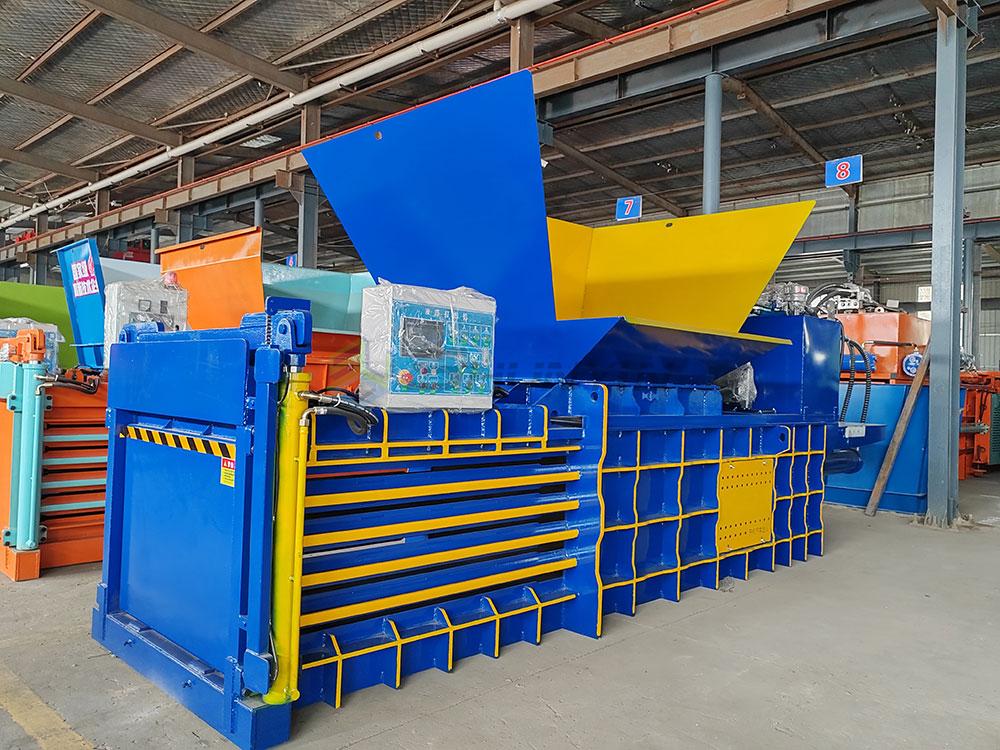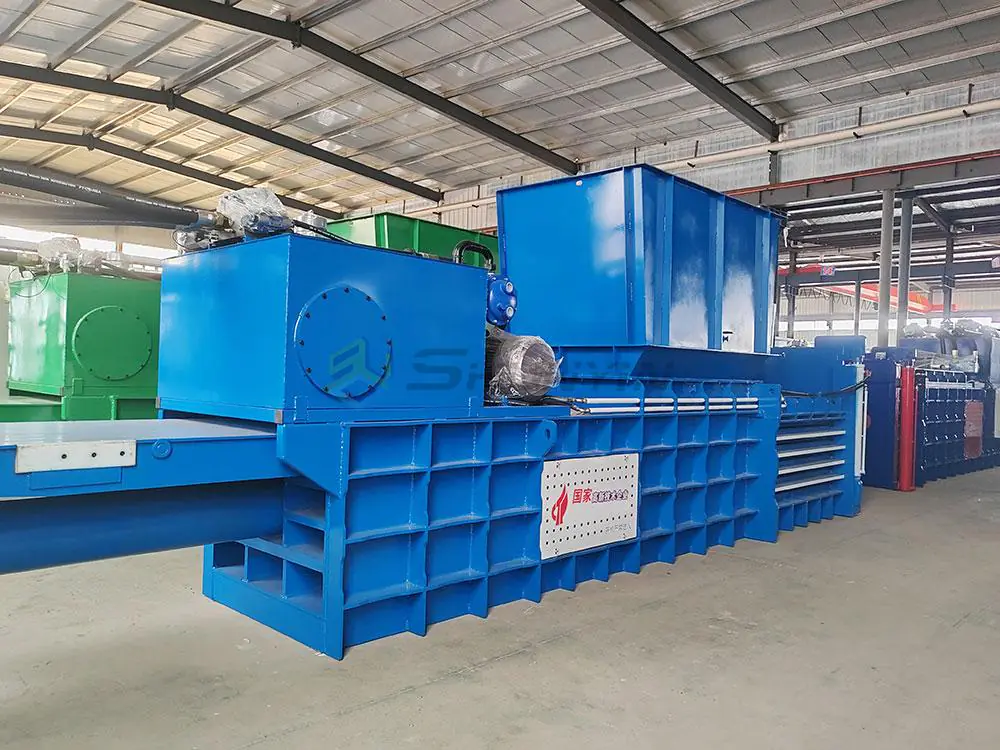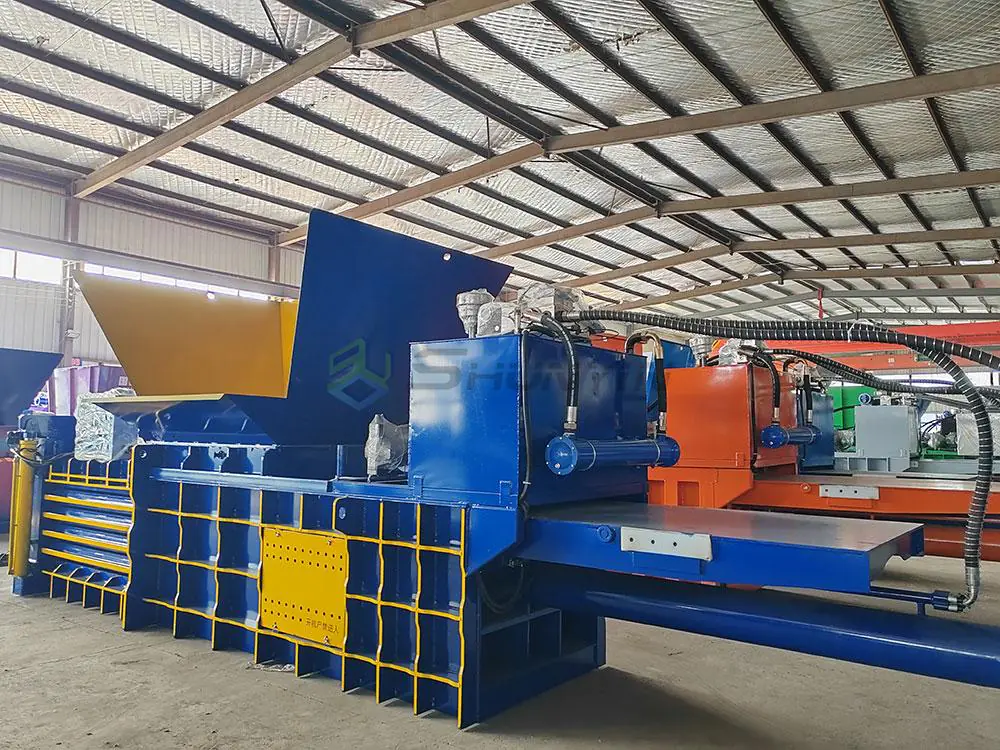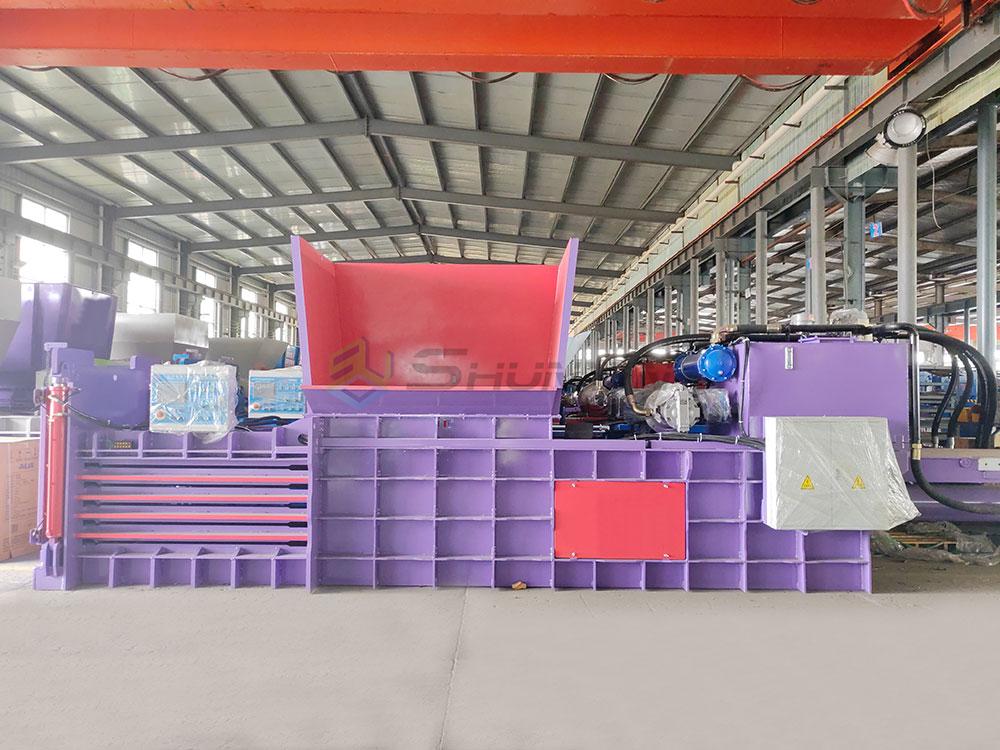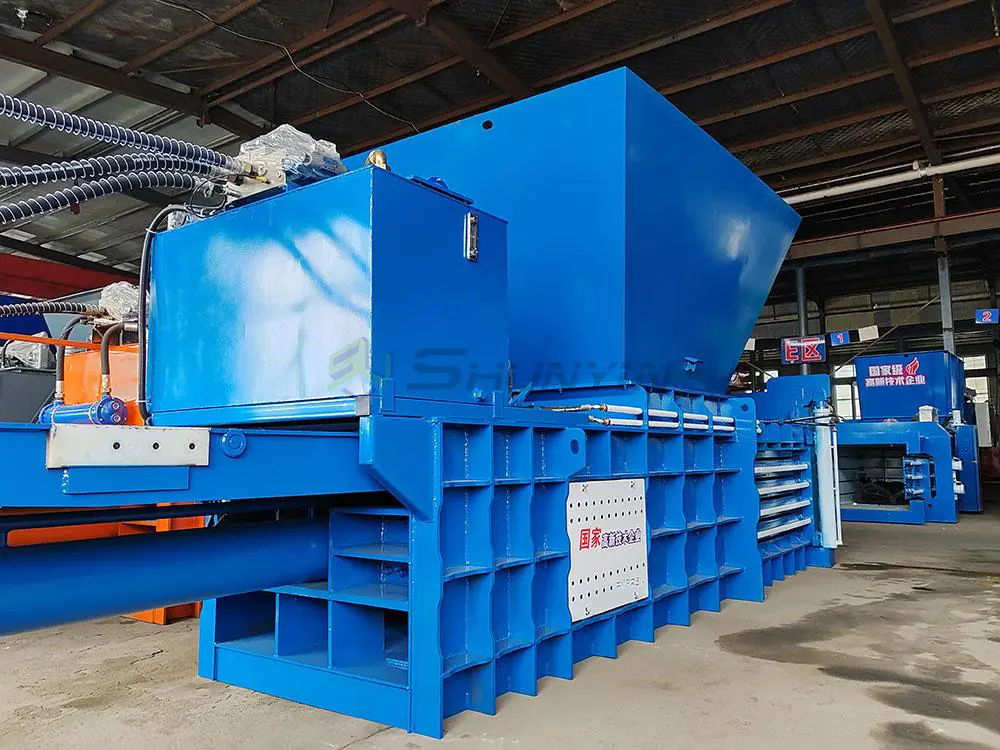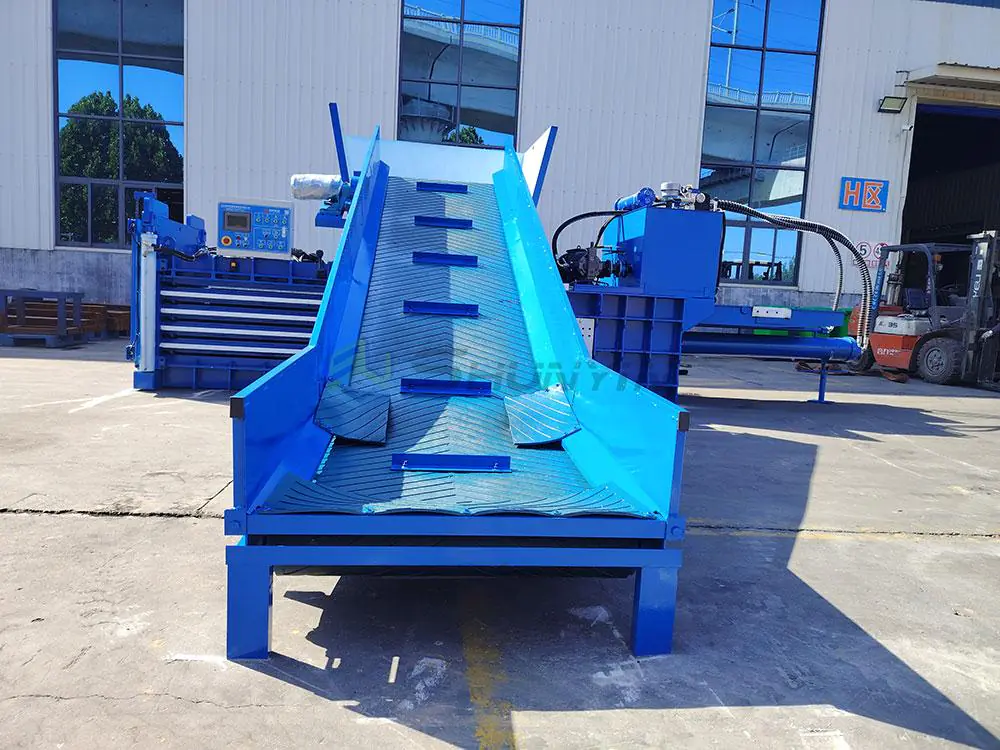
Have you ever wondered how huge volumes of loose materials become compact, manageable blocks? That’s where my 14 years in baler manufacturing comes in – let me show you what these machines truly do.
A baler machine compresses and binds materials like plastic, paper, or metal scrap into compact bales for efficient storage and transportation. Through hydraulic pressure, it reduces material volume by up to 90%, enables standardized stacking, and prepares recyclables for industrial processing. Modern balers feature customizable pressure settings (10-200 tons), automatic tying systems, and safety mechanisms for different material types.
Now that you know the core function, let’s break down the complete picture of baler operations. We’ll explore machine mechanics, operator roles, and how these factors impact your recycling profitability.
What is the function of the baler machine1?
When I first witnessed a baler crushing car parts into metal cubes, I realized its true power isn’t just compression – it’s transformation. Here’s what every buyer should understand:
Baler machines serve three primary functions: volume reduction through hydraulic compression (50-200 tons), material densification for economic transportation, and shape standardization for automated handling systems. Key components include the feeding chamber, compression platen, binding system (wire/strap), and ejection mechanism. Industrial models process 2-10 tons/hour depending on material density and bale size requirements.

How Material Type Dictates Functionality
Different materials demand specific compression approaches:
| Material | Compression Force Needed | Bale Dimensions | Special Features Required |
|---|---|---|---|
| PET Bottles | 15-30 tons | 1.2x1x0.8m | Anti-rebound system |
| Corrugated Cardboard | 10-20 tons | 1.5x1x1m | Dust suppression |
| Aluminum Cans | 50-80 tons | 1x1x0.6m | Non-spark hydraulic fluid |
| Textile Waste | 5-15 tons | 2×1.5x1m | Continuous feeding conveyor |
| Mixed Plastics | 25-40 tons | 1.2×0.8×0.8m | Heating elements for plastic fusion |
Through years of optimizing machines for clients, we’ve found that proper force calibration increases bale density by 27% on average compared to generic settings.
Hydraulic System Essentials
The heart of any baler beats in its hydraulic system. Let me break down critical maintenance aspects:
- Pump Types: Gear pumps (economical) vs piston pumps (high-pressure)
- Pressure Ranges: 700-3000 PSI for different material grades
- Oil Change Intervals: Every 800-1000 operating hours
- Common Failure Points: Seal degradation (replace every 2 years), hose abrasion (yearly inspection)
For export clients like Lambert in Canada, we recommend cold-resistant hydraulic oil (rated to -40°C) to handle harsh winters without performance loss.
What is the role of a baler machine operator?
When I first trained operators in Jakarta, one crucial truth emerged – skilled operation boosts output by 40%. Here’s what effective baling management requires:
Baler operators perform six key tasks: material sorting/preparation, machine parameter setting (pressure/cycle time), safety checks, bale quality control, basic maintenance, and production logging. They require knowledge of material compression characteristics, emergency stop procedures, and basic hydraulic system troubleshooting. Proper operation reduces downtime by 60% compared to automated systems without supervision.

Critical Operator Competencies
Through our ISO-certified training programs, we prioritize:
-
Material Assessment Skills
- Density estimation
- Contaminant identification
- Moisture content evaluation
-
Machine Optimization Parameter Adjustment Impact Optimal Range Compression Time Affects cycle efficiency 30-90 seconds Platen Clearance Determines bale dimensions 50-150mm Tying Delay Ensures proper material settling 2-5 seconds -
Safety Protocol Mastery
- Lockout-Tagout (LOTO) procedures
- Emergency stop response (<3 seconds)
- PPE requirements (cut-resistant gloves, steel-toe boots)
What is the process of baling machine?
Having overseen 50+ installations, I can confirm that systemized processing prevents 80% of operational issues. Here’s the step-by-step reality:
The baling process involves four stages: material feeding (manual/conveyor), compression cycle initiation, bale binding (strapping/wiring), and ejection/stacking. Modern machines complete this cycle in 60-120 seconds through PLC-controlled automation. Critical factors include chamber loading density (70-90% capacity) and metal detection systems to prevent equipment damage.
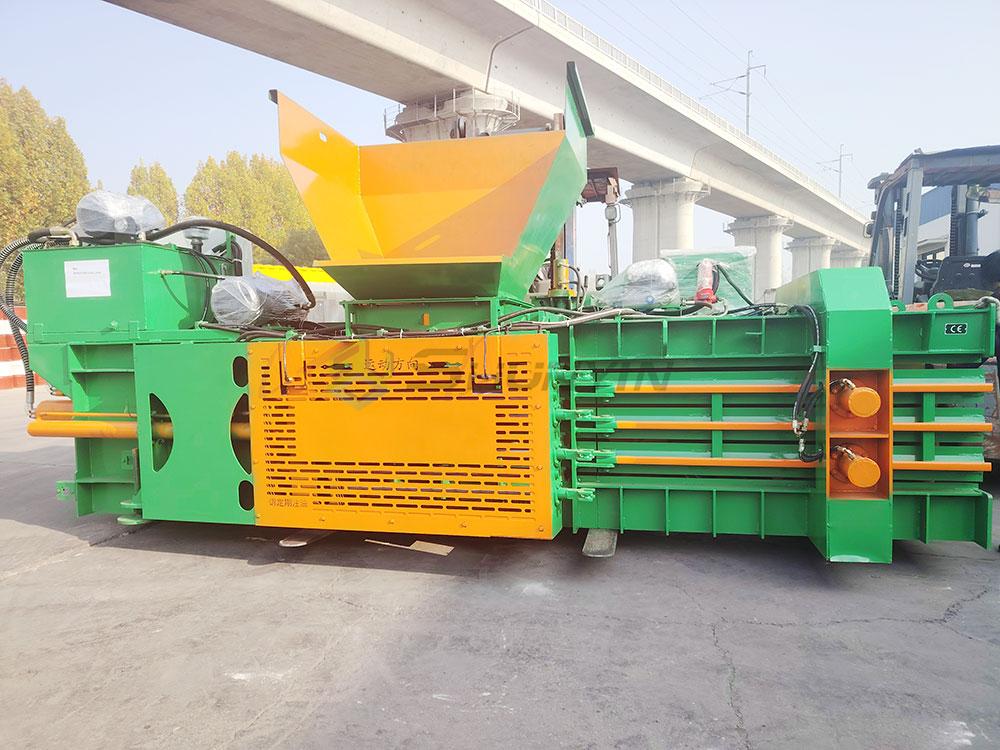
Cycle Time Breakdown
Optimizing each phase maximizes throughput:
| Process Stage | Time Allocation | Energy Consumption | Common Bottlenecks |
|---|---|---|---|
| Material Feeding | 20-40 seconds | 5-15% | Manual load inconsistency |
| Compression | 25-60 seconds | 70-85% | Hydraulic overheating |
| Binding | 10-20 seconds | 10-20% | Strap jamming |
| Ejection | 5-15 seconds | 2-5% | Bale dimension mismatch |
Through IoT sensors added to our latest models, operators receive real-time recommendations to shave 18% off cycle times.
What is the purpose of baling?
Beyond the obvious space savings, baling revolutionized my clients’ profitability. Let’s examine the financial mechanics:
Baling serves three core purposes: transportation cost reduction (40-70% savings), material value preservation (prevents contamination), and compliance with recycling regulations. Compact bales meet mill specifications for automated feeding systems, increasing resale value by 15-30% compared to loose materials. Environmental benefits include 60% lower carbon footprint in logistics.

Economic Impact Analysis
For a medium-sized recycling center processing 100 tons/month:
| Metric | Without Baler | With Baler | Improvement |
|---|---|---|---|
| Transport Costs | $18,000 | $7,200 | -60% |
| Storage Space Needed | 2000 sq.ft | 400 sq.ft | -80% |
| Material Contamination | 12% | 3% | -75% |
| Labor Costs | $6,000 | $4,200 | -30% |
| Processing Time | 160 hours | 70 hours | -56% |
Ready to transform your material handling? Explore customized baler solutions with 15 years’ expertise. Let’s compress your costs, not your profits.
Effective baling merges mechanical power with operational intelligence. From understanding hydraulic dynamics to optimizing operator workflows, every factor contributes to sustainable recycling economics. Choose partners who translate technical specs into tangible ROI.
-
Understanding the mechanics of a baler machine can enhance your recycling efficiency and profitability. ↩


